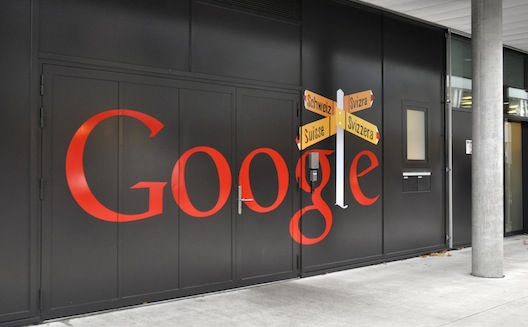5 tips for building the perfect startup pitch, at Google Zurich


A week ago, I ventured off on a special roadtrip: StartupBus Europe, a trans-European 3 day-long hackathon on wheels. In the first installment, I explained how participants spend their first week building teams and pivoting. In this piece, as the finale draws near, challenges are changing.
Visiting a Google office is always an experience. Google’s office in Zurich, Switzerland, the company's largest engineering office in Europe, the Middle East and Africa, is as cool and colorful as you would have expected.
 Like any other employees at Google, we started
off with a breakfast you can’t forget – picture an infinite buffet
with mountains of fresh fruit, personalized fruit juices and food
from all over the world – in a huge bright cafeteria with a
must-have slide (perhaps
inspired by Oasis500- or was it the other way
around?).
Like any other employees at Google, we started
off with a breakfast you can’t forget – picture an infinite buffet
with mountains of fresh fruit, personalized fruit juices and food
from all over the world – in a huge bright cafeteria with a
must-have slide (perhaps
inspired by Oasis500- or was it the other way
around?).
Their offices are as playful as you’d expect: employees are going
running at anytime of the day, Google Maps skidoos are parked in
the hallway, developers walk barefoot in the cafeteria, and tennis
tables are at everyone’s disposal. Yet it's no surprise that
security is also tough: pictures are forbidden, and Yumi, our
Google guide for the day, is tracking our every move: there's no
way we’ll manage steal a single well-guarded secret.
As part of our activities, Jordi Montserrat, a
major Swiss entrepreneur (Akodi, Xo3-MyComponents), investor
(ventureLAB, venture kick) delivers one of
the most intensive pitch workshops I’ve ever attended. Here are his
main pieces of advice:
1. Life is a pitch
If you want your startup to be known, do not miss a single opportunity to pitch, to potential clients, partners, investors or even a general audience. Always be ready, urges, Montesserat.
2. Get a bang line
You need to get your audience’s attention from the very first second. To do so, find an intro that will intrigue them. A few possibilities:
- show off your traction: impress your audience with the number
of users or the money you've already made
- compare your startup to a successful service ("we’re an Airbnb
for X or Y") and explain what makes you different or better
- make the audience dream of the future: what if tomorrow…?
- move your audience by sharing the personal story that brought you
to build that startup
- intrigue them with the story of your startup’s pivot
- amaze them with a hot new technology
Any way you do it, you should always show that there’s a problem
and demonstrate how you’ll solve it.
3. Then, explain
Now that you have your audience's attention, you’ll have time to explain your product. But remember: keep it short and simple. Go straight to the main questions:
- Who pays and why? Explain your product, what it brings, and
how you’ll make money from it.
- What do you do plan to master? List the resources you have access
to, and the partners you’re working with.
4. Show your work
Entrepreneurs are everywhere; why should people trust you rather than another? Gain their trust gradually, point by point.
- Show you’ve done your homework, and that you know the market
and your competition.
- Prove you have unique technology.
- Explain why your team is a winning one, what each member brings
to the table, and why you’re different from others.
- Share your experience and network.
5. Adapt your pitch to your audience
You shouldn’t give the same speech to a consumer, a journalist and an investor; each have their own interests and languages. Adapt.
Likewise, adapt your pitch to the local language. In the U.S. you can boast - investors might like the confidence and will filter the info themselves - but in Europe, where boasting is often seen as pretentious and unrealistic, entrepreneurs are better off giving facts and letting investors judge, Montserrat says. (In the Arab world, investors might be used to hearing people boast, but it doesn't mean much if the revenue model doesn't hold water).
At the end of this workshop, the 19 "buspreneurs" on StartupBus
Europe were out of their comfort zone; Montserrat, and his
relentless tricky questions made them realize how far they still
had to go.
That night, on the bus to Munich, the teams worked non-stop to be
ready for the next day’s semi-finale in front of a jury of
investors.


